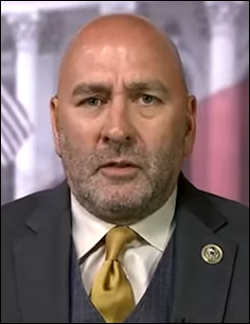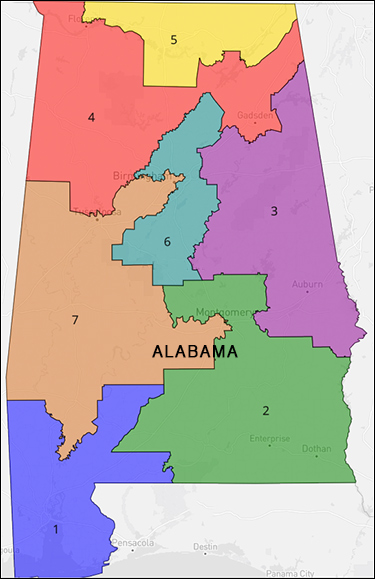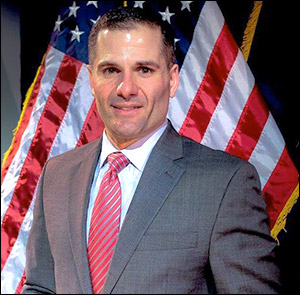By Jim Ellis — Tuesday, Oct. 25, 2022
Voting
 Target Smart: First Early Vote Report — The Target Smart data organization has released their first major report highlighting the earliest of early voting figures (through Oct. 19). Though the pre-election ballot casting cycle still has multiple days remaining for the 45 states that employ some form of an early voting procedure, we already see turnout figures very similar to the 2020 partisan voting pattern.
Target Smart: First Early Vote Report — The Target Smart data organization has released their first major report highlighting the earliest of early voting figures (through Oct. 19). Though the pre-election ballot casting cycle still has multiple days remaining for the 45 states that employ some form of an early voting procedure, we already see turnout figures very similar to the 2020 partisan voting pattern.
In the Senate battleground states, Target Smart has recorded over 2.7 million ballots already cast. This is just under one-third the number of people who voted early in these states back in 2020 and already a half-million more than the total early votes cast in the 2018 midterm.
At this point, it appears that the partisan early vote complexion nationally and in the battleground states is similar to what we saw unfold in 2020. Therefore, if Republicans are headed for a significant bump in this midterm turnout, it is not yet evident from the preliminary early voting reports.
New York: Judge Strikes Down Absentee Ballot Pre-Election Counting — New York is already one of the slowest ballot counting states, and a judicial ruling rendered on Friday will likely lead to an even slower count. The legislature and governor had enacted a law that allowed election officials to count the received absentee ballots before the election with the caveat that no results were released. The judicial ruling struck down this new law, saying such a process is unconstitutional under New York law. Therefore, we can count on not receiving final returns until some six weeks post-election day.
Senate
Iowa: Sen. Grassley’s More Comfortable Lead — On the heels of the Des Moines Register/ Selzer & Company poll (Oct. 9-12; 620 likely Iowa voters) that found Sen. Chuck Grassley (R) holding only a three-point lead over retired Navy Adm. Michael Franken (D), The Tarrance Group followed with their own study. This poll (Oct. 15-19; 600 likely Iowa general election voters; live interview) restores the senator to a double-digit lead, 53-42 percent. Still, this is a competitive contest and a race to watch in this election cycle’s final days.
Washington: Big Conflict — Once again, we see two polling firms testing at exactly the same time in the same Senate race (Oct. 19-20) but arriving at radically different conclusions. Public Policy Polling, surveying for the Northwest Progressive Institute (782 likely Washington voters; live interview & text) sees Sen. Patty Murray (D) topping Republican Tiffany Smiley, 52-42 percent, which is consistent with most other surveys and the Aug. 2 jungle primary vote (Murray 54-Smiley 32 percent). Conversely, the co/efficient firm (1,181 likely Washington voters; live interview & text) sees only a three-point margin between the two candidates, 48-45 percent, in the senator’s favor.
Survey USA was also in the field during the similar period (Oct. 14-19; 589 likely Washington voters; online) and they split the difference between PPP and co/efficient. S-USA returned a 49-41 percent Murray advantage. Though this race has several times touched upon competitiveness, the jungle primary and Washington voter history again suggests an impending victory for Sen. Murray.
Governor
New York: Rep. Zeldin Takes Lead — The last week has brought new data regarding the New York governor’s race. Several pollsters are suggesting that US Rep. Lee Zeldin (R-Shirley/East Long Island) is gaining momentum against Gov. Kathy Hochul (D). The co/efficient firm (Oct. 18-19; 1,056 likely New York general election voters; live interview & text) reports their ballot test showing, for the first time, Rep. Zeldin taking a one-point, 46-45 percent, lead.
The five previously released October polls saw Rep. Zeldin trailing by 8 (Marist College), 6 (Schoen Cooperman Research), 11 (Siena College), 4 (Quinnipiac University), and 6 points (Survey USA). Now, co/efficient takes him to a one-point edge. It appears that the New York governor’s race is heading toward an interesting conclusion.






